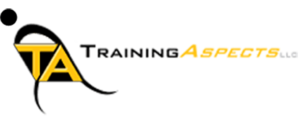Could Your Shoulder Also Be the Cause of Your Elbow Pain?
Could Your Shoulder Also Be Causing Your Elbow Pain?
As we learned in the previous article about the wrist and elbow pain, going right to the source of pain isn’t always going to be the fix. We have to think outside the box and examine what else could be causing the problem. The elbow joint is sandwiched between the wrist and the shoulder so if one of those two joints aren’t moving correctly the elbow will likely try to compensate and take on a workload it is not meant to handle. If this happens repeatedly over time pain is inevitable. So how could the shoulder actually affect the elbow?

Anatomy of the Shoulder
The anatomy of the shoulder is very complex and has so many muscles that attach to it, to keep this article simple we will only be referring to specific muscles that typically affect shoulder movement the most.
The Muscles Around The Shoulder
We usually think of the main muscles of the shoulder being the deltoids (the muscles that give our shoulders that round boulder look), which they are, but usually aren’t always the culprits when it comes to shoulder issues. It’s the muscles that are near the shoulder that can cause the biggest problem though. Muscles like the pec minor/major (chest muscles) and the biceps muscles attach to the bones that connect the shoulder joint. These muscles are very often overused and create tightness in the shoulder leading to a rounded shoulder look and movement dysfunction.
The Rotator Cuff and Shoulder Stability
The rotator cuff consists of 4 small muscles that are often overlooked and almost always undertrained. These 4 muscles (supraspinatus, infraspinatus, teres minor, and subscapularis) are responsible for efficient movement of the scapula and stability of the shoulder joint. When these muscles underwork your shoulders will lack stability and look to other muscles to take over the workload, leading to muscle compensations and poor movement patterns.
How Does This Relate To My Elbow?
When the rotator cuff is weak/underworking the shoulder will lack stability. When a large joint like the shoulder lacks stability, the body will need to compensate and create stability somewhere else. The elbow is the lucky one next in line to take on the grunt work. The problem is the elbow is not designed to withstand that kind of work, especially over long periods of time. In combination with the chest/biceps muscles over working and creating poor movement patterns, there is a recipe for elbow pain and potential injury.
How to Restore Shoulder Function and Stability
We will be taking a similar approach as we did in the last article about increasing wrist mobility. We will start with myofascial release and static stretching of the tight muscles which include the pec minor (chest) and the biceps.

Chest Release

Bicep Release

Chest Stretch

Bicep Stretch
Now that we have created more range of motion we can start restoring proper movement back to the shoulders and scapula with mobility drills.
Then finally after we have restored proper movement and mobility we can effectively use strengthening exercises for the rotator cuff and surrounding muscles to increase stability and function of the scapula and shoulder joint.
Written By:
NSCA-CPT, ACE-CPT
Suggested Article:
Take action… Now!
Visit us:
Inside of the Flyers Training Center
601 Laurel Oak Rd.
Voorhees, NJ 08043




